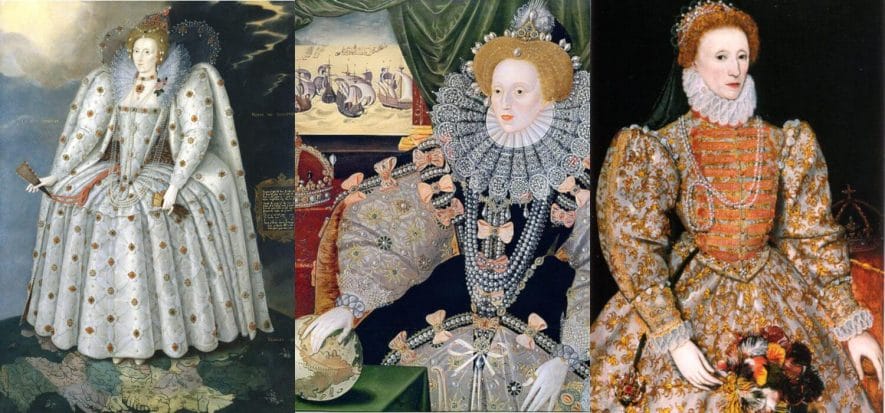Elizabeth I used to take gloves as a gift as long as she was certain about leather. The Queen of England (1533-1603) was painstakingly following instructions given by her Secretary of State. In fact, during the tanning process someone might add some poison into the material, warned William Cecil. It is no coincidence that in several vintage portraits (here is a montage of pictures taken from Wikipedia) of Elizabeth I, her hands were uncovered.
Did Elizabeth I accept gloves as a gift? Not every time
“Do not take from unknown people, as a present, perfumes nor leather gloves with a peculiar scent; do not take anything you can eat either”. Quite an odd recommendation, necessary though, as it was safeguarding the life of the Queen of England. Sir William Cecil, who was serving Elizabeth I as Secretary of State, put it down in black and white around the mid-16th century: that was one of the instructions to respect with regard to “royal protocol and attire”, at the time of the enthronement.
Dangers related to leather in the 16th century
Such recommendation was necessary in the 16th century: since admittance to the royal palace was strictly under surveillance, they believed that somebody could intentionally use gloves, which were a common gift at that time, as a murder weapon. On the one hand, they feared perfumes because they could possibly contain some harmful substances; on the other hand, they also believed that some criminal minds could process gloves ad hoc during the leather-tanning stages.
Poisoned tanning
More specifically, they feared that someone could add, during the leather tanning process, some poison. Subsequently, once the victim was wearing the manufactured article, the item of clothing might have slowly released poison by exhalation, therefore gradually poisoning the victim over time. Alternatively, they could simply spray poison on the gloves external surface.
The murder weapon
Seemingly, they never ascertained any case of murders carried out by making use of poison-tanned leather gloves. Such potential modus operandi did arouse the Brits’ imagination, so much so that, in the Elizabethan age, dramatist Christopher Marlowe picked them out as murder weapon in his famous play, The Massacre at Paris. In the play, which tells about the events related to the Saint Bartholomew’s Day Massacre, which took place in Paris in 1572, one of the characters said: “It seems to me that these gloves emanate a very intense fragrance; this scent gives me headache…the deadly poison. My heart hurts: this scent is crushing my head, my heart is collapsing, and I am about to die”.
Read also:











